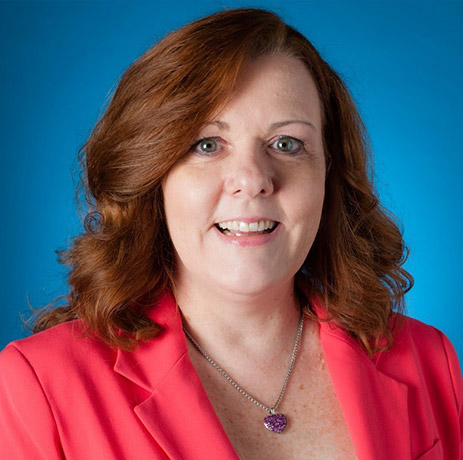With most COVID-19 restrictions lifted in the U.S. and options for both preventing and treating the virus available, organizations are eager to arrive at a “new normal” in which employees return to the office. However, 78% of employees who are currently working from home all or most of the time say they’d like to continue to do so.
Getting the return to office right is critical to employee retention and culture. How these plans and polices are communicated is just as important as the substance of them. We caught up with four internal communications pros on their experience with navigating return-to-office communications.

Lisa Noury
Director, U.S. Internal Communications
Bayer

Lauren Walrath
VP, Public Affairs
Kyowa Kirin

Ed Cook
Director, Internal Communications
Kyowa Kirin

Lauren Conway
Associate Director, Employee Communications
Organon
Here’s what they had to say:
Q. What have you found most challenging about communicating your organization’s return-to-office plans and how are you managing through it?
Lisa: The pandemic itself! Everything kept changing – and quickly – so it was hard to strike the right plan, do all the work leading up to a launch, then delay and explain the delay. Another challenge was getting the right information to the targeted audience. We usually address colleagues across the U.S. but the return to office was focused on our headquarter sites, with other sites rolling out at different times. We worked with communicators from all sites and divisions and tried to create a plan that worked for everyone.
Lauren C.: Gaining alignment on the right level of structure on our return to workplace. Organon was born in the pandemic. We knew we could be effective working remotely because that’s how we launched our company. We needed to incorporate in-person interaction in a way that aligned with our values and the culture we’re building.
Ed: First, there were a lot of starts and stops with our plans to return to the office due the changing nature of the virus and outbreaks. That made it hard to establish a rhythm or cadence of what to expect when. Second, people are different, and their situations are different, so a “one-size-fits-all” approach to communications wouldn’t work.
Lauren W.: To Ed’s last point, there really was a bell curve with people’s readiness and desire to return. On one end of the spectrum, people were very eager to get back. On the other end of the spectrum, people were wary of health risks and anxious about the waves of COVID infection that continued to come. Our employee surveys helped quantify these feelings.
Q: What have you found to be employees’ greatest concerns with respect to working on-site and how are you using internal communications to address them?
Lauren C: People were worried about the transition if they were required to come back certain days and how that would impact them balancing childcare or other home obligations. When we communicated the guidance to “talk to your manager and figure out what’s right for you” – as opposed to a set schedule – we got several messages from employees thanking the company for that flexibility, and others saying, “I’m so relieved and even more excited now to come back to the workplace.”
Ed: Employees got used to working from home and the flexibility that gave them with their personal and family schedules. And they had a sense of security about containing their virus exposure. There was a genuine concern about a loss of work/life balance. We used internal communications to be as open and transparent as possible about what returning to the office might mean to employees from a positive point of view – establishing and reconnecting with coworkers, enhanced teamwork, and collaboration. We also consistently updated and reinforced the health and safety practices put into place to minimize potential health issues.
Lauren W: We also engaged a group of culture ambassadors to try to make the return positive and comfortable. That ambassador team did a lot of planning with us to organize office orientations and on-site events once the doors were reopened. They’ve brought great energy into the office.
Q: Is there a specific message or tactic that has really helped employees feel more comfortable and positive about returning to the office?
Lisa: Leader activation and engagement. Leaders who are using tips and talking points and having those conversations with their teams are more effective. The divisions with incredibly engaged leaders are having a much easier time with this transition.
Ed: We reopened in stages, with an eye toward emphasizing employee health and comfort throughout the process. And we used employee surveys and feedback sessions to gauge our progress and to adjust where needed.
When we fully reopened the NJ offices under a hybrid work model, we held “open houses” and “lunch and learn” events to help employees adapt to the new environment.
Q: What’s one piece of advice you have for organizations navigating return-to-office communications?
Lauren C: Be flexible and be the voice of the employee to the company.
Lisa: Adequately equip and activate your leaders to get your colleagues on board. A hybrid work model can be ambiguous. Every team is different: they have different customers, business needs, and stakeholders. The leader is the closest to the team and their needs, so they have the power to move the needle.
Ed: Don’t do it alone. Pull together a cross-functional team (and include HR and Legal) to map out the policies and procedures and the resulting communications. Having everyone singing from the same sheet of music helps with consistency and transparency of messaging.
Q: Communicators are people too. You’re also contending with the stress of the pandemic and other world events while pushing out a high volume of critical communications to employees. What’s something you do to cope and regain perspective?
Lisa: Our team leader set up daily “check-in or vent sessions.” Part of that meeting was dedicated to open venting or sharing – personal life, work, anything. That time allowed us to get to know each other better and usually share a few laughs. The work could be so intense at times, and the feeling of comradery in a judgement-free space meant a huge deal to us.
Lauren C: Keeping a sense of humor with our team and knowing that we’re all in it together goes a long way.
Ed: I’m fortunate to have a great family, excellent coworkers, and a strong support system. Talking out my frustrations helps me get out of my head.
Lauren W: When the pandemic began to subside, I tried to reconnect with people in person and take more time away “from the office.” As a company, we also instituted Fri-Yays to reduce meeting times on Fridays. These have been a lifesaver for me, and something other employees say makes a big difference in their weeks!
Key takeaways
- The rate of infection can change quickly and vary by country, by state, and by community. Expect to tailor and target your communications by location as opposed to rolling out enterprise-wide return-to-office messages.
- When explaining the work model (hybrid, on-site, etc.) your organization is adopting, be prepared to communicate with empathy, transparency, and positivity.
- Equip managers with what they need to effectively communicate directly with their teams. At the same time, make sure mechanisms for upward feedback are a part of your plans.
- When it all gets to be a bit much, lean on friends and family – and good sense of humor – to keep you going.
